Description
buy fentanyl patches
What is Fentanyl used for?
Fentanyl patches are used to relieve severe pain in people who are expected to need pain medication around the clock for a long time and who cannot be treated with other medications. Fentanyl is in a class of medications called opiate (narcotic) analgesics.
1. About fentanyl
Fentanyl is a strong opioid painkiller. It’s used to treat severe pain, for example during or after an operation or a serious injury, or pain from cancer.
It is also used for other types of pain that you’ve had for a long time when weaker painkillers have stopped working.
Fentanyl is available only on prescription. It comes as:
- patches to be put on your skin
- lozenges and tablets that dissolve in the mouth
- nasal spray
- injections (usually only given in hospital)
Fentanyl patches are used for long-lasting pain. Your doctor may also prescribe other types of fentanyl if you need extra pain relief while your regular painkiller wears off.
2. Key facts
- The most common side effects of fentanyl are constipation, and feeling sick and sleepy.
- It is possible to become addicted to fentanyl, but your doctor will explain how to reduce the risks of becoming addicted.
- If you need to take fentanyl for more than a few weeks, your treatment plan may include details of how and when to stop taking this medicine.
- It’s best not to drink alcohol when you first start taking (or using) fentanyl. You’re more likely to get side effects such as feeling sleepy or drowsy.
- Tell a doctor or nurse about your fentanyl patch if you’re having any treatment or tests. Also, remind your pharmacist about your patch when you collect prescriptions or buy other medicines.
3. Who can and cannot take fentanyl
Fentanyl can be used by most adults.
Some patches can be used in children from the age of 2 years and over. However, young children and older people are more likely to get side effects.
Fentanyl patches are usually only used if you’ve already been taking other strong opioid painkillers. Your doctor will work out how much fentanyl to give you depending on what dose of other opioids you have been taking. This is to reduce the risk of an overdose.
Fentanyl is not suitable for some people. Tell your doctor before starting this medicine if you:
- have ever had an allergic reaction to fentanyl or any other medicines
- have breathing difficulties such as asthma or a lung condition
- are addicted to alcohol or a heavy drinker
- have a head injury or condition that causes fits or seizures
- have irregular heartbeats (arrhythmia)
- have adrenal gland problems
- have kidney or liver problems
- have an enlarged prostate
- have low blood pressure
- are trying to get pregnant, are pregnant or breastfeeding
4. How and when to take it
Follow your doctor’s instructions about how to use this medicine. This is particularly important because fentanyl can be addictive.
Doses vary from person to person. Your dose will depend on how bad your pain is, how you’ve responded to other painkillers and if you get any side effects from fentanyl.
Fentanyl tablets, lozenges, nasal spray and injections are fast-acting. They’re used for pain that is expected to last for a short time.
Fentanyl patches are slow-release. This means fentanyl is gradually released through the skin into your body.
How often to take or use fentanyl
How often you take or use fentanyl depends on the type that you’ve been prescribed:
- patches – apply a new patch every 3 days (remove the old one first)
- tablets, lozenges and nasal spray – usually only when you need them
Some patches keep working after they’ve been removed as they “store” fentanyl under the skin. Fentanyl patches take longer to start working but last longer. They’re used for when pain lasts for a long time.
Sometimes your doctor may prescribe a fentanyl patch with a fast-acting painkiller. This is to manage sudden flare-ups of pain that “break through” the relief the patches give.
Important:Overdose warning
Do not apply more than 1 patch at a time, unless your doctor tells you to.
Using more patches than recommended could lead to a fatal overdose.
Strength of fentanyl
The different types of fentanyl come in a range of strengths:
- patches – these release 12 micrograms to 100 micrograms of fentanyl every hour
- nasal spray – 50 micrograms to 400 micrograms
- tablets – 100 micrograms to 800 micrograms
- lozenges – 200 micrograms to 1,600 micrograms
Will my dose go up or down?
Before taking or using fentanyl, you will usually start on a low dose of another type of opioid, such as morphine. This will be increased slowly until your pain is well controlled.
Once your pain is under control, your doctor may swap you to fentanyl patches. This will avoid you having to take tablets or capsules each day.
If your doctor agrees that you can stop taking fentanyl, they will reduce the strength of your patch gradually. This is especially important if you’ve been taking it for a long time to reduce the risk of withdrawal symptoms.
Your doctor may switch you to morphine tablets or liquid or another similar painkiller so that they can reduce the dose of fentanyl even more slowly.
How to apply a fentanyl patch-buy fentanyl online
- Read the instructions that come with your patch carefully.
- Remove the patch from the packet – do not use scissors to open it as you may cut the patch. Do not cut patches unless your doctor has told you to.
- Keep the empty packet – you will need to put your used patch in this to keep it safe. You will then need to return it to your pharmacist who will destroy it in the right way.
- Peel off the plastic from the back of the patch. Do not touch the sticky side of the patch.
- Apply the patch to clean, dry, flat, undamaged skin. Do not touch the sticky side of the patch. Choose somewhere you can reach easily such as the top of your chest or top of your arm. Try to avoid very hairy areas, or clip the hairs first before applying the patch. If you find shaving easier, shave the area a few days before you apply the patch to make sure shaving does not irritate your skin.
- If your doctor tells you to use more than 1 patch, follow the instructions that come with the patches. Do not let the patches overlap on your skin.
- Do not cover the patch or patches with anything, including a dressing or tape. Talk to your doctor or pharmacist if you find your patch does not stick very well.
- Wash your hands after touching a patch.
Do not expose your patch to strong heat or sunlight. This includes long hot baths, saunas, electric blankets, hot water bottles, heat pads and sunbathing.
You can have showers and go swimming. Check the patch is still on properly afterwards and dry the area around the patch carefully.
What to do if your patch falls off- buy fentanyl online
Check your patch every day to make sure it stays stuck to you, especially around the edges.
If your patch is missing, make sure it has not stuck to another person by mistake. It’s important to find it and put it back in the packet until you can return it to your pharmacist.
If a patch falls off before the usual 3 days are up, put another patch on a different part of your body and put the old patch back in the packet it came in.
Urgent advice
- a fentanyl patch sticks to someone it has not been prescribed for
Changing your patch-buy fentanyl online
When you change your patch, try to do it at the same time of day. Think of ways to help you remember when to change it. You could:
- write the details on your calendar
- write the time and date on the surface of the patch itself (using a soft-tip, permanent marker pen)
- use a phone app or smart speaker to record the time
Storing fentanyl safely- buy fentanyl online
Keep all types of fentanyl in a safe place and out of reach of children or vulnerable adults.
Used patches still contain fentanyl that can be dangerous to someone else. It’s important to stick the sticky sides back together after you have taken them off and keep them safe until you can take them back to your pharmacist(buy fentanyl online).
What if I forget to take or apply it?-buy fentanyl online
This will vary depending on which type of fentanyl you’re using. Most types of fentanyl are only taken when you need them and so you are unlikely to forget.
Never take 2 doses at the same time to make up for a forgotten one.
Always remove the old patch before applying a new one. Never use more than 1 patch at a time, unless your doctor tells you to. buy fentanyl online
If you often forget to change patches, it may help to set an alarm to remind you.
What if I take too much?
It’s important not to take more than your prescribed dose, even if you think it’s not enough to relieve your pain. Speak to your doctor first, if you think you need a different dose.
Too much fentanyl can be dangerous. However, the amount that can lead to an overdose varies from person to person.
If you’ve taken too much you may feel very sleepy, sick or dizzy. You may also find it difficult to breathe. In serious cases you can become unconscious and may need emergency treatment in hospital.
Make sure the patch does not get stuck to someone else’s skin, especially a child’s, by accident – for example if it falls off in bed or if the patch falls on the floor.
Immediate action required
- you’ve taken too much fentanyl and find it difficult to breathe
- you or someone else swallows a fentanyl patch
5. Taking fentanyl with other painkillers
It’s safe to take fentanyl with paracetamol, ibuprofen or aspirin.
Do not take any painkillers with codeine including co-codamol, ibuprofen and codeine (Nurofen Plus) and Solpadeine when using fentanyl – you will be more likely to get side effects.
6. Side effects
Like all medicines, fentanyl can cause side effects in some people but many people have no side effects or only minor ones.
You are more likely to get side effects with higher doses of fentanyl.
Common side effects
Common side effects happen in more than 1 in 100 people.
Talk to your doctor or pharmacist if the side effects bother you or do not go away:
- constipation
- feeling or being sick (nausea or vomiting)
- stomach pain
- feeling sleepy or tired
- feeling dizzy or a sensation of spinning (vertigo)
- confusion
- headaches
- itching or skin rashes
Serious side effects-buy fentanyl patches
Serious side effects happen in less than 1 in 100 people.
Call your doctor (if you are wearing a patch, remove your patch) if:
- your muscles feel stiff for no obvious reason
- you feel dizzy, tired and have low energy – all of these together could be a sign of low blood pressure
Immediate action required.
- you have difficulty breathing or short shallow breathing
- you have had a fit or seizure
Serious allergic reaction
In rare cases, it’s possible to have a serious allergic reaction (anaphylaxis) to fentanyl.
Immediate action required
- you get a skin rash that may include itchy, red, swollen, blistered or peeling skin
- you’re wheezing
- you get tightness in the chest or throat
- you have trouble breathing or talking
- your mouth, face, lips, tongue or throat start swelling
You could be having a serious allergic reaction and may need immediate treatment in hospital.
These are not all the side effects of fentanyl. For the full list, see the leaflet inside you medicines packet.
Information:You can report any suspected side effect using the Yellow Card safety scheme.
7. How to cope with side effects-buy fentanyl patches
What to do about: buy fentanyl patches
- constipation – try to eat more high-fibre foods such as fresh fruit and vegetables and cereals. Try to drink several glasses of water or squash each day. If you can, it may also help to do some gentle exercise. Speak to your doctor about medicine to help prevent or treat constipation caused by fentanyl if your symptoms do not go away. Watch a short video on how to treat constipation.
- feeling or being sick – this side effect should normally wear off after a few days. Stick to simple meals and do not eat rich or spicy food. Drink plenty of fluids, such as water or squash, to avoid dehydration. If you’re being sick, take small, regular sips of water. Ask your doctor about anti-sickness medicine if it gets worse or lasts longer than a few days.
- stomach pain – try to rest and relax. It can help to eat and drink slowly and have smaller and more frequent meals. Putting a heat pad or covered hot water bottle on your stomach may also help. If you are in a lot of pain, speak to your pharmacist or doctor.
- feeling sleepy or tired – these side effects should wear off within a week or two as your body gets used to fentanyl. Talk to your doctor if they carry on for longer. Do not drink alcohol as it will make these side effects worse.
- feeling dizzy or a sensation of spinning (vertigo) – stop what you’re doing and sit or lie down until you feel better. Do not drink alcohol as it will make these side effects worse. If the feeling does not go away, do not take any more medicine and speak to a pharmacist or your doctor. Do not drive, ride a bike or use tools or machinery. buy fentanyl patches
8. Pregnancy and breastfeeding
Fentanyl is generally not recommended during pregnancy. buy fentanyl patches
In early pregnancy, it’s been linked to some problems for your baby. If you take fentanyl at the end of pregnancy there’s a risk that your baby may get withdrawal symptoms or be born addicted to fentanyl.
However, it’s important to treat pain in pregnancy. For some pregnant women with severe pain, fentanyl might be the best option. Your doctor is the best person to help you decide what’s right for you and your baby.
For more information about how fentanyl can affect you and your baby during pregnancy, read this leaflet about fentanyl on the Bumps website.
Fentanyl and breastfeeding-buy fentanyl patches
Fentanyl is not usually recommended if you’re breastfeeding.
Small amounts of fentanyl pass into breast milk and can cause breathing problems for your baby. Speak to your doctor as they may want to recommend a different painkiller.
Non-urgent advice: Tell your doctor if you’re:
- trying to get pregnant
- pregnant
- breastfeeding
9. Cautions with other medicines-buy fentanyl patches
Some medicines and fentanyl interfere with each other and increase the chance that you will have side effects.
Tell your doctor if you are taking any medicines:
- to help you sleep
- for high blood pressure
- to help stop you feeling or being sick
- to treat symptoms of an
- for mental health problems including depression, or to reduce stress or anxiety
- for any infection
- to control fits or seizures
Mixing fentanyl with herbal remedies and supplements
It’s not possible to say that herbal medicines or remedies are safe to take with fentanyl.
Important: Medicine safety
Tell your doctor or pharmacist if you’re taking any other medicines, including herbal medicines, vitamins or supplements.

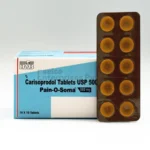
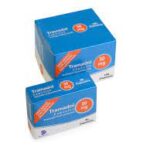
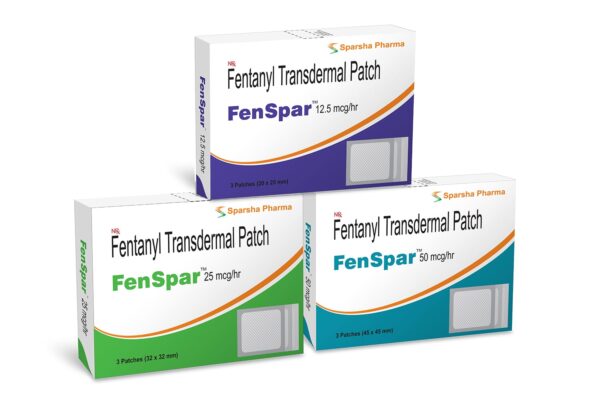
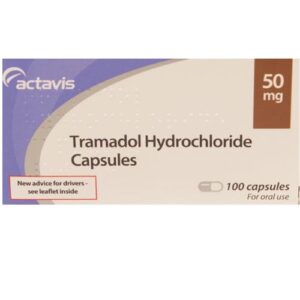


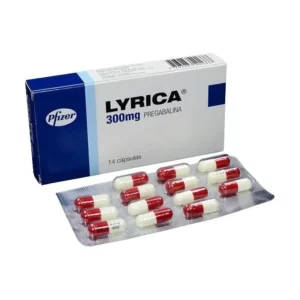

Reviews
There are no reviews yet.